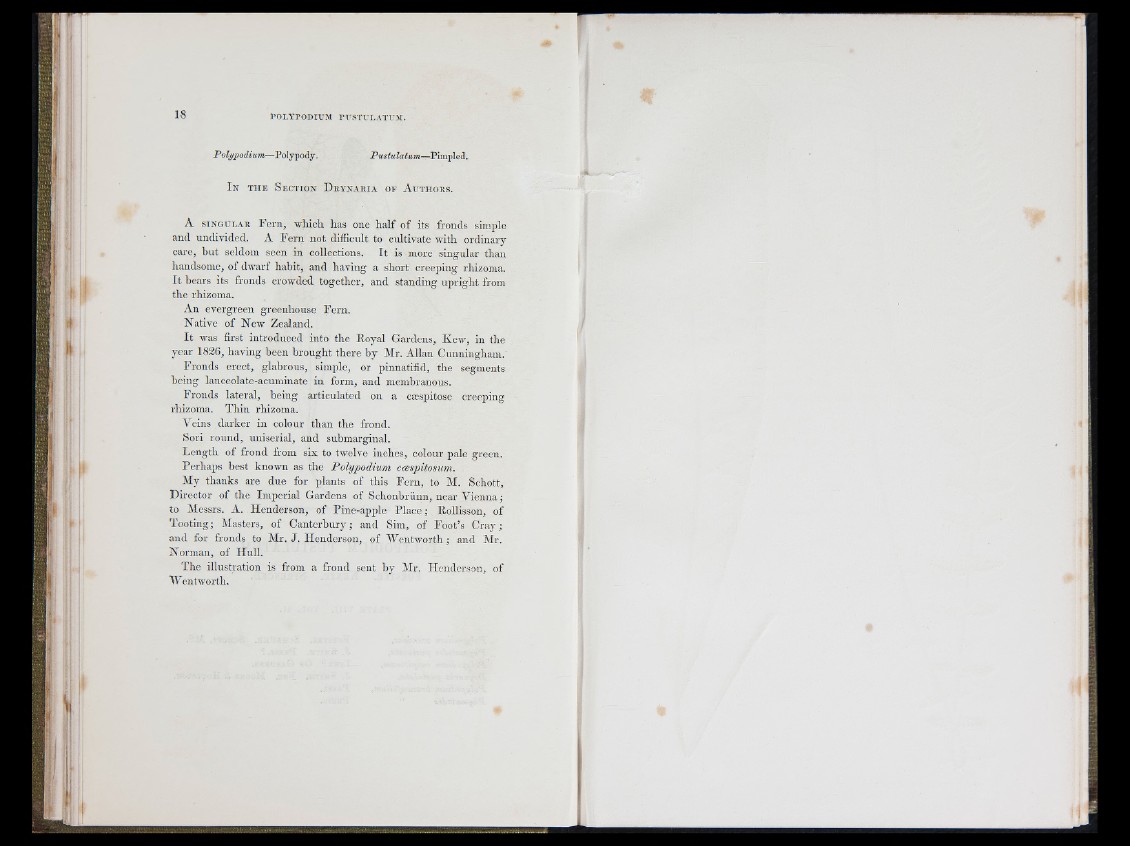
18 I'ni.YPOmUM PT’STUI.ATUM.
P o lypodium—Polypody. P u s tu la tum—Pimpled.
I n t h e S e c t io n D r y n a r ia o f A u t h o r s .
A s in g u i .a e , F e rn , wliicli has one h a lf of its fronds simple
and undivided. A F e rn not difficult to cultivate with ordinary
care, b u t seldom seen in collections. I t is more singular than
handsome, of dwarf h abit, and having a short creejiing rhizoma.
I t bears its fronds crowded together, and standing u p rig h t from
the rhizoma.
A n evergreen greenhouse Fern.
Na tiv e of N ew Zealand.
I t was first introduc ed into th e Royal Gardens, Kew, in the
year 1826, having been b ro u g h t th e re b y Mr. Allan Cunningham.
F ro n d s erect, glabrous, simple, or pinnatifid, th e segments
being lanceolate-acuminate in form, and membranous.
Fronds lateral, being a rticulated on a ciespitose creeping
rhizoma. T h in rhizoma.
Veins d arker in colour than the frond.
Sori ro u n d , uniserial, and submarginal.
L en g th of frond from six to twelve inches, colour pale green.
P erh ap s best known as the Polypodium ccBspitosum.
M y thanks are due for plants of this F e rn , to M. Schott,
Dire c to r of the Imp e ria l Gardens of Schonhriinn, near V ien n a ;
to Xlessrs. A. H en derson, of Pine-apple P la c e ; Rollisson, of
T o o tin g ; b laste rs, of C a n te rb u ry ; and Sim, of F o o t’s C ra y ;
a n d for fronds to Mr. J . Henderson, of W e n tw o r th ; and Xlr.
Norman, of H u ll.
The illustration is from a frond sent by Air. Hen d e rso n , of
AA'cntworth.